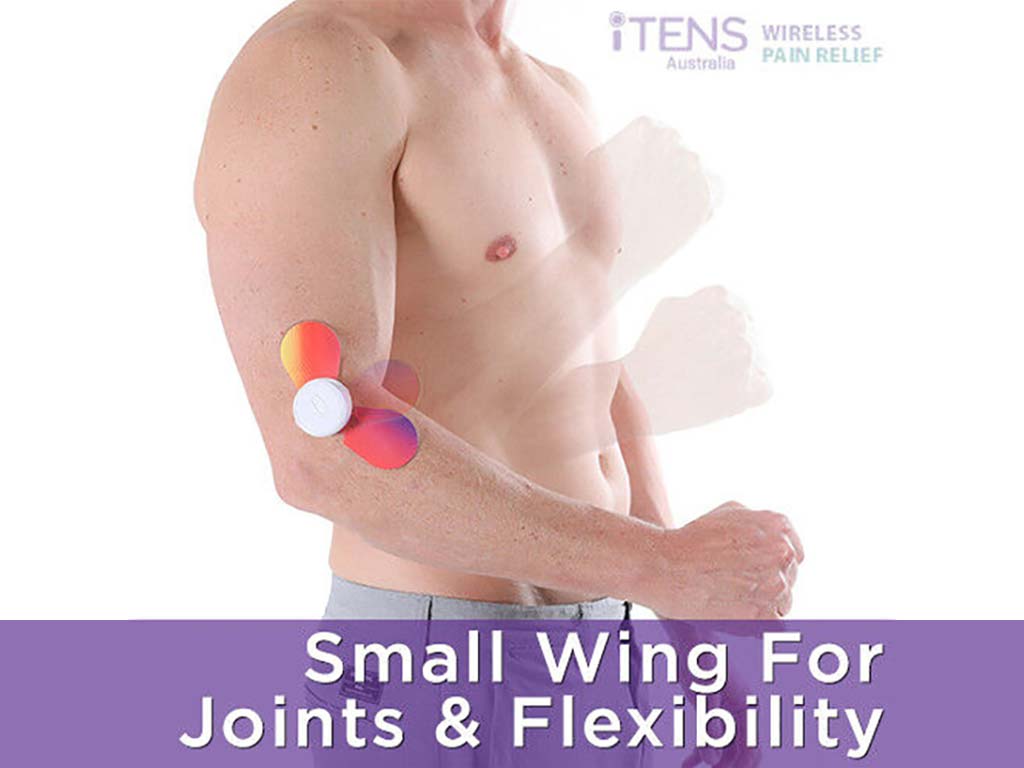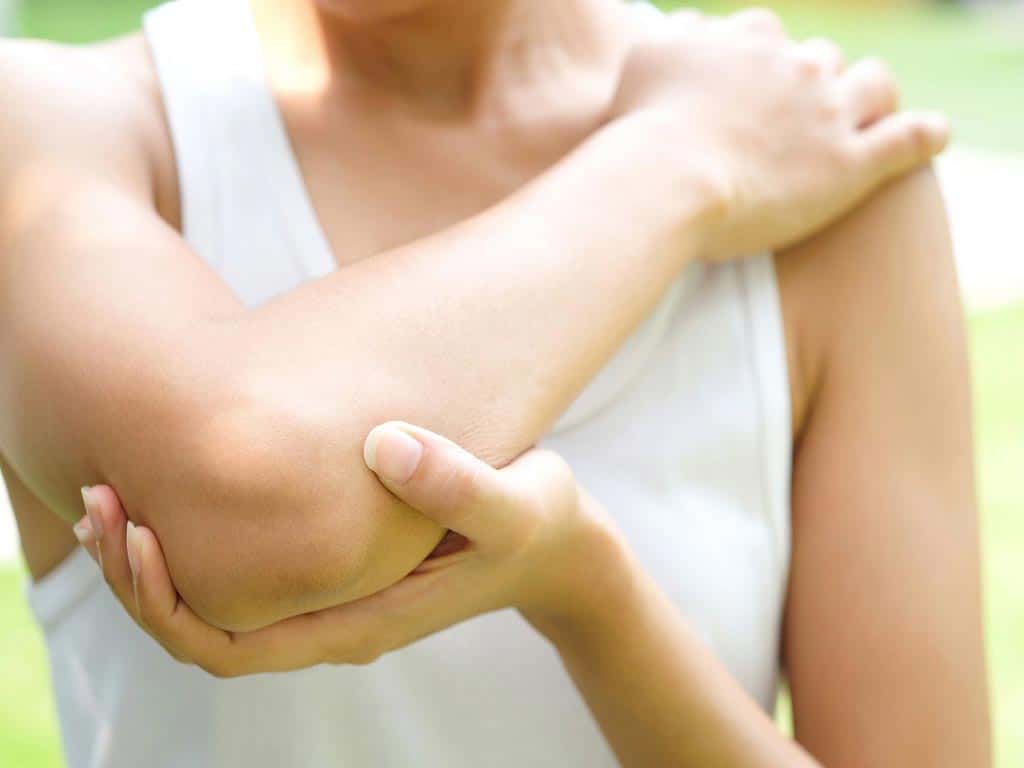
Golfer elbow, also known as medial epicondylitis, is a common condition that causes pain and inflammation in the elbow. While various treatment options are available, one non-invasive and drug-free pain relief approach is Transcutaneous Electrical Nerve Stimulation (TENS). To use the TENS unit for golfers elbow, start by locating the tender spot, usually near the bony bump called the medial epicondyle. Then, place one pair of electrodes on each side of the elbow joint.
The common cause of the golfer elbow is repetitive stress or motions, leading to overuse of the muscles and tendons in the forearms. This is common among golfers from repeated swinging of a golf club. If left untreated, it could become chronic, affecting the overall quality of life. Thus, a TENS device for pain management can be valuable. This comprehensive guide will explore how a TENS machine works for elbow pain, the electrode placement guide, and the safety guidelines.
How a TENS Unit for Golfers Elbow Works
A TENS machine is a portable device consisting of a handheld control unit and pairs of electrodes. It delivers mild electrical pulses to the body by placing the adhesive electrode pads on the skin. These pulses travel along the nerve fibres and stimulate them to alleviate pain through various mechanisms involving pain gating and endorphin release.
The TENS unit for golfers elbow has adjustable settings to control the frequency, pulse duration, and intensity of the currents. The frequency is the number of pulses in a second. Varying levels can have different effects on the nerve fibres. On the other hand, pulse duration is the length of time each pulse lasts. A longer pulse duration may be more effective in targeting deeper tissues, while a shorter pulse duration may be better for superficial pain.
Lastly, intensity is the strength of each pulse. Adjusting the intensity level helps suit different pain levels, ranging from mild to extreme. They manifest in tingling sensations that can be increased or decreased according to individual preferences. Additionally, they manifest in tingling sensations, often causing noticeable pulses or muscle twitches.
Main Theories at Work
- Gate Control Theory of Pain – this theory suggests that electrical pulses can stimulate the sensory nerves. This stimulation can “close the gate” in the spinal cord, blocking the pain signals from reaching the brain.
- Endogenous Opioid Release – various stimuli can induce the release of hormones or neurotransmitters, like endorphins, in the body. One such factor is electrical nerve stimulation. Endorphins inhibit the nerve cells from sending pain signals. Hence, they are known as natural painkillers of the body.
- Blood Circulation – TENS stimulates the motor nerves, increasing the blood flow to the area. This results in reduced inflammation and swelling.

Electrode Placement When Using a TENS Unit for Golfers Elbow
Correct pad placement is vital to maximising effectiveness when using a TENS unit for golfers elbow. Primarily, identify the area where the most tender spot and position the electrodes on the side of the pain. For golfer elbow, the proper electrode placement is typically on the inner elbow and the forearm muscles.
The pad placement should be one to two inches apart to prevent overlapping sensations. It is essential to avoid putting the electrodes directly on the elbow joint. Aside from the risk of further discomfort, applying the pad on the joint is likely to come off since it is a flexible body part. Likewise, it is advisable to use small electrode pads for small areas to ensure adequate stimulation without overwhelming the nerves.
Another use of a TENS machine is relieving other kinds of elbow pain, such as lateral epicondylitis or tennis elbow. This condition is the tearing of the tendons that join the forearm muscles and outside of the elbow. For best use, always refer to the placement chart that may come with the device or the recommendations of a healthcare professional.
How to Use the Device
Operating a TENS machine is straightforward. After putting the adhesive electrodes in place, turn on the device and adjust the settings. For painful injuries, set the frequency to a high level, while a low frequency is more beneficial for chronic joint pains.
Begin with the lowest intensity and gradually increase it to a strong but comfortable level. Next, set the treatment duration for 15 to 30 minutes at a time. After the session, turn off the device before removing the pads. Individuals may use the device multiple times a day. However, they must ensure to give a 20-minute break in between.

Safety Guidelines When Using a TENS Unit for Golfers Elbow
When using a TENS unit for golfers elbow, it is crucial to follow specific safety guidelines. Firstly, follow the recommended settings of the device or the advice of a healthcare professional. Do not exceed the recommended levels of intensity to prevent further harm or injury to the underlying nerves or soft tissues. In addition, it should not cause severe muscle contractions.
Secondly, avoid prolonged use of the TENS unit. Limiting the treatment duration to one hour is advisable to prevent the risk of skin irritation, muscle fatigue, and skin burns. Thirdly, do not place the adhesive electrodes on broken skin, open wounds, skin rashes and infections. As much as possible, place them over healthy muscles.
Lastly, do not use the TENS machine while bathing, as exposure can cause electrical shocks and damage the device. Similarly, avoid using a TENS unit while sleeping or driving to prevent distractions or the electrodes from coming off. While TENS is generally safe, discontinue use in case of allergic reactions to the electrode pads.
When to See a Doctor?
There are several circumstances where seeing a doctor should be a priority. It is best to consult a healthcare professional to determine if TENS therapy is the optimal method of relief for elbow pain. This is particularly important for people with other serious health conditions.
Another reason to see a doctor is if the symptoms of golfers elbow do not improve despite TENS and other conservative treatments. Moreover, seek medical care if the pain worsens and impacts daily activities. A doctor may be able to develop complete treatment plans, including physical therapy and muscle conditioning modalities.
Conclusion
A TENS unit for golfers elbow is a drug-free pain relief method that can help manage different types of pain, including chronic joint pain and acute pain, such as sports injuries like golfers elbow. For effective pain relief, place the electrode pads above and below the joints of the inner elbow. Individuals may alter the placement slightly for more optimal stimulation. However, avoiding direct placement on the joints or other bony prominences is vital.
TENS works by stimulating the nerves to block pain signals from reaching the brain and releasing endorphins. It can also help improve the circulation of blood, thereby reducing inflammation in achy muscles. Furthermore, following the safety guidelines is essential to avoid any potential risks. Users should ensure to keep the settings within a comfortable and tolerable range. In case of any adverse effects, consult a doctor immediately. With proper use, a TENS machine is a valuable tool for pain relief.







